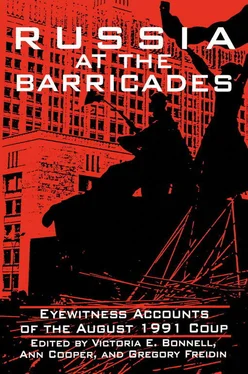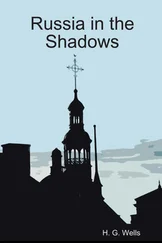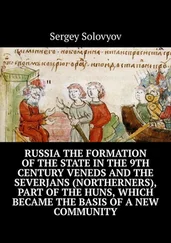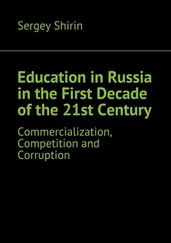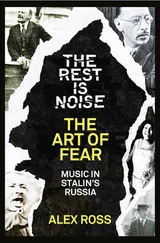The coup was led by people who had come to oppose many of the political, economic, and cultural reforms inaugurated by Gorbachev. Again paradoxically, when the coup failed, it elevated one of the boldest and most outspoken of the reformers, Boris Yeltsin, to an unprecedented position of power and authority. He emerged as the hero of the August crisis—the David who smote the Communist Party Goliath once and for all. In the months following the coup, Yeltsin carried forward with renewed vigor many of the reforms that had been stalled under Gorbachev’s equivocating leadership. The progress of these reforms has been far from easy, and Yeltsin’s own popularity has sometimes plunged very low. Nevertheless, when a legitimation crisis was precipitated in the spring of 1993 by the conservative opposition in Russia’s Congress of People’s Deputies, Yeltsin and his reform strategy once again won substantial popular support in a national referendum.
The seven surviving members of the Emergency Committee, together with five other high-ranking officials considered complicit in the Committee’s actions, were arrested and imprisoned following the abortive coup. [29]They were charged with “betraying the Motherland,” a crime punishable by death. After remaining in jail for eighteen months, they were released on bail. Since that time, many of them have given interviews, addressed public gatherings, and participated in public rallies, including a May Day demonstration in 1993 that ended in a bloody confrontation with police. Meanwhile, the prosecution prepared a case against them.
After some delays, the trial finally began on April 14, 1993, but was suspended almost immediately when one of the defendants (Tiziakov) suddenly became ill. The defense team raised a number of objections to continuation of the trial and sought dismissal of the charges. It argued that the court had no jurisdiction to try the defendants on charges of betraying a country (the Soviet Union) that no longer exists. The court rejected these arguments.
On May 18, 1993, the three military judges hearing the case accepted a defense motion to suspend the proceedings indefinitely. The court had been persuaded by defense arguments about the alleged bias of the prosecution team, citing the fact that Russia’s Chief Prosecutor, Valentin Stepankov, and his deputy, Yevgenii Lisov, had used the materials from the pretrial investigation in their book The Kremlin Conspiracy , published in late 1992. [30]Since the authors of the book were unequivocal in their indictment of the alleged conspirators (went the argument of the defense), and the prosecution team was subordinate to the country’s Chief Prosecutor, its members could not be impartial in presenting to the court the results of their investigation. The judges referred the case to the Supreme Soviet to determine how “real independence” of the prosecution team could be guaranteed. [31]The Supreme Soviet subsequently rejected the appeal as unfounded and the trial resumed yet again on July 7, 1993, only to be postponed due to the illness of one of the codefendants. [32]In September 1993, the court ruled against a motion for postponement by the prosecution and thereby removed the last procedural hurdle to the resumption of the trial.
Popular attitudes toward the case are deeply divided, mirroring different retrospective evaluations of the coup itself. For some, the three days in August remain inscribed as a courageous victory for the forces of democracy and reform. For others, the takeover was a well-meaning but bungled effort to rescue the Soviet Union from chaos and disintegration. Still others view the events of August 1991 as signifying little more than a shift in power from one segment of the nomenklatura to another. A public opinion poll conducted in August 1993 showed the general public to be deeply divided about the coup and the criminality of the plotters. A survey of 1,600 people conducted by the “Mnenie” opinion research service disclosed that 48 percent thought the coup plotters should get “no punishment” or be formally pardoned (in the fall of 1991, only 30 percent had felt that way). The proportion of those who believed their lives would have been better had the coup succeeded rose from 4 percent in the fall of 1991 to 14 percent in August 1993. [33]
Given such ambivalent popular attitudes about the events of August 1991, it is hardly surprising that the first two anniversaries of the coup were commemorated in a low key. The celebration has been deeply compromised by an inversion of some of the symbols of the democratic resistance to the August coup. The White House and the plaza behind it, renamed Freedom Square, were once symbolically associated with Yeltsin, the Russian parliament’s resistance to the putschists, and the crowds of Muscovites who turned out to defend freedom against resurgent totalitarianism. Between August 1991 and August 1993, those symbols—the White House, Freedom Square, and the Russian parliament itself—became transformed into their opposites through association with the anti-Yeltsin opposition in the Supreme Soviet and its motley collection of supporters, including ultranationalists, pro-Communists, neo-Stalinists, neo-Nazis, anti-Semites, and others. The dismal economic conditions and political disarray at the highest levels of the Russian government put a further damper on the celebration of a victory that promised far more than it has delivered to ordinary people.
On the first anniversary of the putsch, Yeltsin delivered a major address to the nation praising those who, a year earlier, had been “motivated by a noble patriotic impulse from the heart and by a sense of civic duty to defend freedom and democracy.” He castigated those who wanted to “erase [this heroic deed] from the people’s memory.” [34]
Moscow Mayor Gavriil Popov marked the first anniversary with an extensive and highly reflective statement about the coup and its aftermath. Popov argued that the democrats’ “main mistake [was] that they imagined they had taken power in Russia after the coup. Unfortunately, the people believed this, too.” Instead, argued Popov, the democrats’ victory “finally forced the reformist Party apparatchiks and nomenklatura to do what they had not done [under Gorbachev]—tu organize themselves, unite, cleanse themselves of ideological garbage, remove the conservatives and start making reforms.” Reforms were under way, but there was still much work to be done to strengthen democratic principles. [35]
By August 1993, nearly all vestiges of the celebratory aspect of the anniversary had been extinguished. An angry confrontation of groups demonstrating for and against the putschists took place near the White House, with strong overtones of latent violence. The once hallowed ground near the White House, stained by the blood of three victims, had become identified with a coalition of forces calling for the ouster of Yeltsin and the reformers and advocating some of the very measures that the plotters had tried to impose on the country. The anniversary had been transformed into another contested symbolic terrain for Russia’s political leaders and the public.
In early October 1993, the contest escalated into an armed conflict, with the White House once again becoming the focal point of Russia’s post-communist politics. In reaction to Yeltsin’s September 21 decree disbanding the parliament and calling a new election for December, Ruslan Khasbulatov and other parliamentary leaders, the renegade Vice President Aleksandr Rutskoi, and several thousands of their supporters mounted an armed uprising, including lethal assaults on the nearby Moscow Mayor’s office and the Gosteleradio building at Ostankino. This bloody outburst forced Yeltsin to declare a state of emergency in Moscow and to call in the army under Defense Minister Pavel Grachev, who two years earlier had refused to carry out a similar order. Stormed by paratroopers on Yeltsin’s orders, the White House burned through the night of October 4–5, 1993.
Читать дальше
